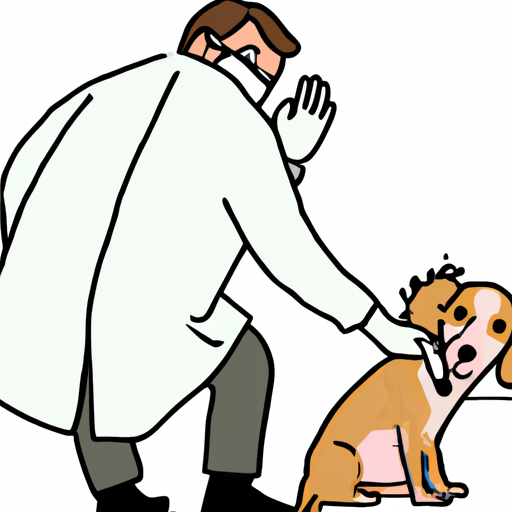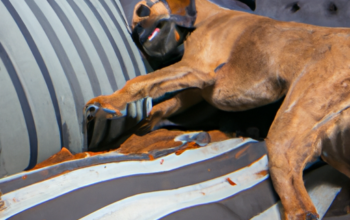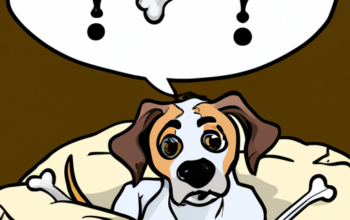Just like maintaining a well-oiled machine ensures its longevity, taking care of your dog’s anal glands is essential to their health and wellbeing. If you’re a dog owner, you’ve likely heard about the importance of expressing these glands regularly. Ignoring this task can lead to discomfort for your furry friend and potentially serious health problems.
Learning how to express your dog’s glands isn’t just about saving money on vet bills—it’s about keeping your pet comfortable and healthy. This article will help you recognize the symptoms of anal gland issues, prepare for the procedure, safely perform it, and understand when it’s time to consult a professional.
With detailed instructions and professional advice, we’ll guide you every step of the way on this important aspect of canine care.
Importance of Anal Gland Maintenance
You mightn’t realize it, but looking after your dog’s anal glands is critical; if ignored, they can cause discomfort and health issues that’ll break your heart to see.
Ensuring gland health benefits both you and your furry friend in myriad ways. Regular maintenance routine reduces the risk of infections and abscesses caused by impacted or blocked glands. It also helps prevent the unpleasant odor associated with unhealthy anal glands.
Moreover, maintaining regular gland care contributes to overall digestive health as these tiny sacs aid in marking territory through scent secretion during bowel movements.
Therefore, recognizing the importance of anal gland maintenance is a significant step towards promoting a healthy lifestyle for your pet. After all, nothing matters more than their well-being.
Recognizing the Symptoms of Anal Gland Issues
In a world where canine derrières speak louder than barks, it’s not the wagging tail but the telltale signs of discomfort that reveal the truth behind their unspoken anal concerns. You need to understand your pooch’s body language and unusual canine behavior to recognize any potential anal gland issues.
Be vigilant for these Gland Infections Signs:
-
Your dog constantly scoots its bottom across the floor. This can be an attempt to relieve discomfort or pressure in the anal area.
-
There’s a foul smell coming from your pet. An infected gland often produces a pungent odor.
-
Your furry friend is excessively licking or biting at its rear end. This usually indicates irritation or pain.
Stay alert to these symptoms and ensure your dog’s health doesn’t fall under the radar.
Preparing for the Procedure
Getting ready for the impending procedure involves more than just steeling your nerves; it’s about ensuring that your furry pal is calm, comfortable, and at ease before they undergo a trip to the veterinarian.
Set aside some time to prepare with proper grooming tools on hand. This includes gloves, soft towels, and perhaps even a gentle pet-friendly cleansing solution.
Your comforting techniques also play an essential role in the preparation process. Talk softly to your dog, slowly petting them to establish a soothing environment.
Familiar scents can be comforting too; consider using their favorite blanket or toy nearby during the procedure. Remember, patience is key here–it may take several attempts before your dog becomes comfortable with this new routine.
Your understanding and compassion will go a long way in making this easier for both of you.
Performing the Process Safely
Once everything’s set up, it’s crucial to approach the task at hand with gentle hands and a calm demeanor. Remember, your dog might feel uncomfortable or scared during the gland expression process, so it’s critical to be patient and reassuring.
Here are some steps to perform this procedure safely:
- Positioning Your Dog:
- Place your dog on a flat surface where they can’t easily escape.
-
If necessary, ask someone to help hold them still.
-
Using Gland Expression Tools:
- Wear gloves for hygiene and as protective measures.
-
Apply gentle pressure around the glands with your thumb and forefinger.
-
Post-Procedure Care:
- Cleanse the area with a mild pet-friendly antiseptic wipe.
- Reward your dog with treats or praise for their cooperation.
Staying calm and taking precautions will ensure both you and your furry friend remain safe throughout this process.
When to Consult a Veterinarian
Let’s face it, folks – playing amateur vet at home can be as risky as trying to cut your own hair after watching a couple of YouTube tutorials. When it comes to expressing your dog’s glands, there are occasions when you really should seek professional help.
If you notice any signs of infection such as swelling, redness, or pus around the gland area, make an appointment with the vet immediately. These symptoms could have serious health implications for your furry friend if left untreated.
Also, if you’re struggling to express the glands yourself or if your dog seems overly uncomfortable during the process, consult a veterinarian right away. Remember that while DIY methods may save on veterinary costs in the short term, risking your pet’s well-being could lead to larger expenses down the road.
Frequently Asked Questions
What are the potential risks or side effects of expressing a dog’s glands at home?
Expressing your dog’s glands at home poses risks such as gland infection dangers and home care challenges. Improper technique may lead to infections, inflammation, or even impaction. It’s essential to be trained properly for this task.
Are certain breeds more prone to anal gland issues than others?
Yes, certain breeds are more prone to anal gland issues. Anal Gland Genetics play a role here. Small breed dogs often require Breed Specific Care due to their propensity towards these problems.
How often should a dog’s anal glands be expressed?
The frequency of expressing a dog’s anal glands varies, emphasizing the grooming importance. Regular vet consultations can help determine an optimal schedule, as some dogs may need it monthly while others less frequently.
Can a dog’s diet affect its anal gland health?
Absolutely, a dog’s diet can impact its anal gland health. Food allergies might be the hidden culprit behind gland issues. High fiber benefits are like a magic bullet, promoting healthy digestion and reducing gland blockages.
Are there any natural remedies or preventative measures for anal gland issues?
Yes, gland massage techniques can help prevent anal gland issues in dogs. Additionally, exploring herbal remedies like adding fibrous foods to your dog’s diet can also aid in maintaining their anal gland health.
Conclusion
In conclusion, keeping up with your pup’s anal gland maintenance is crucial. Surprisingly, about 12% of dogs experience issues with their anal glands. Hence, learning to safely express them can prevent discomfort and potential health problems.
If you notice any signs of trouble or find the process challenging, don’t hesitate to consult a vet. Ensuring your dog’s health should always be a priority!



